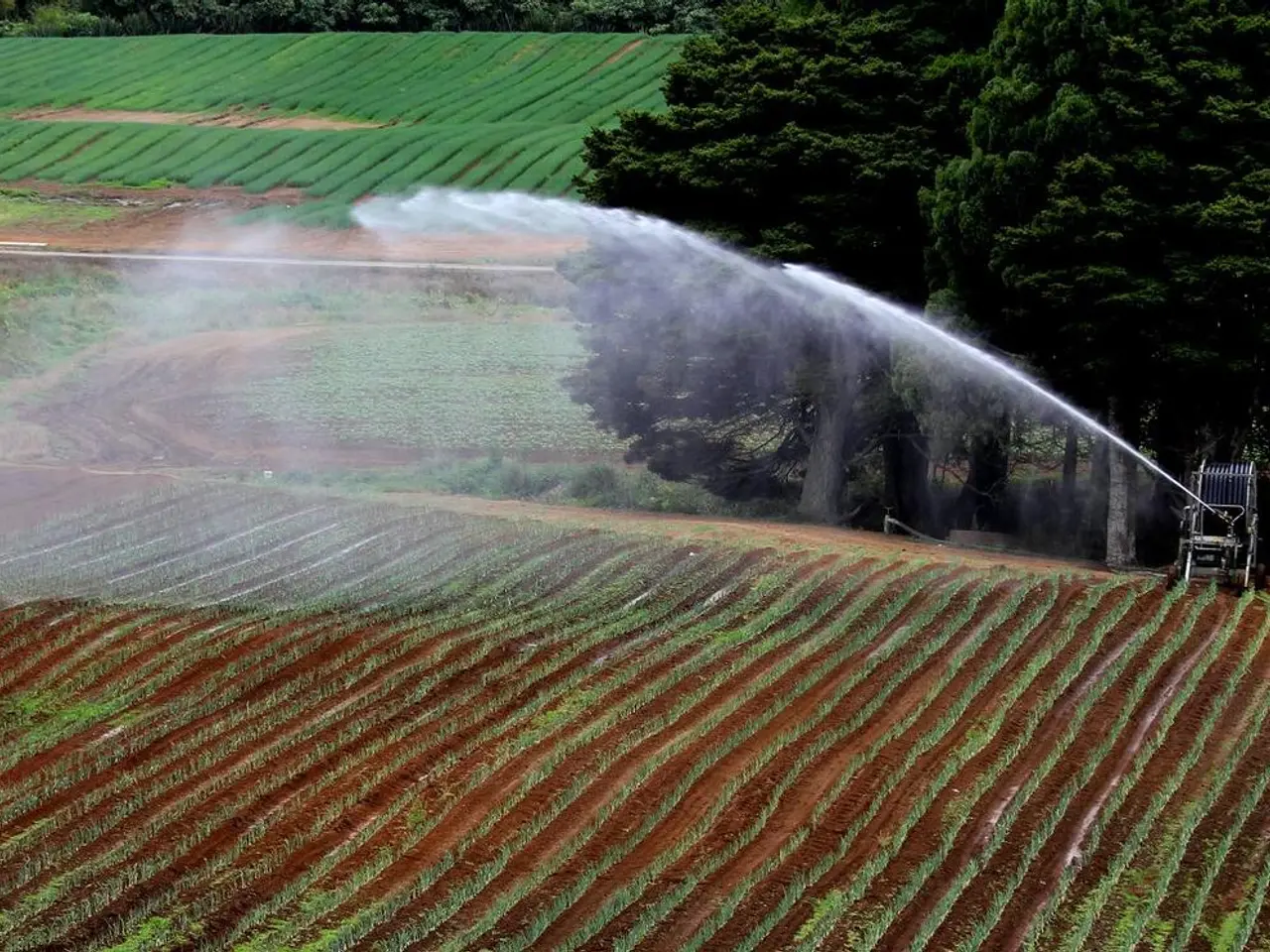Enhanced Farming Practices Elevate Diversity in Flora and Fauna
In the heart of the countryside, farmers are adopting innovative techniques to create a harmonious balance between agriculture and the environment. These practices, known as agroecology, are proving to be a key pathway towards sustainable farming and food security.
Composting, crop rotation, cover cropping, and organic crop management are some of the methods that farmers are employing to recycle nutrients in the farm, boost soil health, and reduce pests and diseases. By working with nature, these techniques not only foster a healthier environment but also provide economic resilience for farmers.
Agroforestry, for instance, integrates trees and shrubs with crops and livestock, creating diverse habitats that conserve wildlife, improve ecosystem services, increase soil fertility, and enhance climate adaptation. Crop diversification and rotation, on the other hand, boost nutrient cycling, break pest and disease cycles, support pollinators, and build resilient agroecosystems.
Cover cropping, a technique that involves sowing non-harvested plants, helps cover the soil, reducing erosion, improving soil structure, enhancing water conservation, and increasing populations of beneficial insects and pollinators. Integrated Pest Management (IPM), which uses natural predators, crop rotation, and targeted use of pesticides, promotes overall biodiversity by reducing chemical residues and protecting beneficial insects.
Reduced or no-till farming minimizes soil disturbance, helping retain soil carbon, improve soil biodiversity, reduce erosion, and conserve water. Regenerative agriculture, a combination of practices like managed grazing, cover cropping, and no-till farming, rebuilds soil health, sequesters carbon, and increases resilience to climate extremes.
Other innovations supporting sustainable agroecology include biological pest control, smart irrigation and water management, renewable energy integration, and the use of nanotech and advanced soil treatments. These techniques create multifunctional landscapes that preserve biodiversity, enhance ecosystem functions, and provide economic resilience for farmers.
The farmer's choice to adopt sustainable methods not only leaves a legacy for future generations but also saves money in the long run. Mulching, for example, helps retain moisture in the soil, reducing the need for watering. Biological control, which involves introducing natural predators to munch on pests, is a cost-effective and environmentally friendly alternative to chemical pesticides.
Polyculture, the practice of growing multiple crops together, supports various species and contributes to a balanced ecosystem. Organic crop management, a key part of sustainable farming, focuses on using natural fertilizers and pesticides instead of synthetic ones, making produce healthier and even tastier.
By promoting biodiversity, farmers are creating a balanced ecosystem that makes farms more resilient. Ecological pest control, which involves working with nature instead of against it, is a sustainable approach that ensures the long-term health of the farm. The use of beneficial insects for natural pest control is another example of this approach, providing a cost-effective and environmentally friendly solution.
In conclusion, sustainable farming practices are not just about growing food; they are about creating a harmonious balance between agriculture, the environment, and the economy. By adopting these practices, farmers are not only ensuring the health of their soil, crops, and livestock but also preserving biodiversity, enhancing ecosystem functions, and providing economic resilience for themselves and future generations.
- Embracing a variety of crops through polyculture not only fosters biodiversity but also contributes to a balanced ecosystem in health-and-wellness and food-and-drink sectors.
- Sustainable farming techniques, like organic crop management, encourage the use of natural fertilizers and pesticides, improving the quality of produce in both the lifestyle and food-and-drink domains.
- Ecological pest control, a key aspect of agroecology, advocates working with nature to maintain the long-term health of the environment within environmental-science and home-and-garden realms.
- By adopting methods like integrated Pest Management (IPM) and biological pest control, farmers can create multifunctional landscapes that prioritize biodiversity and ecosystem functions, benefiting the environment and their economic prospects in science, environmental-science, and home-and-garden sectors.




